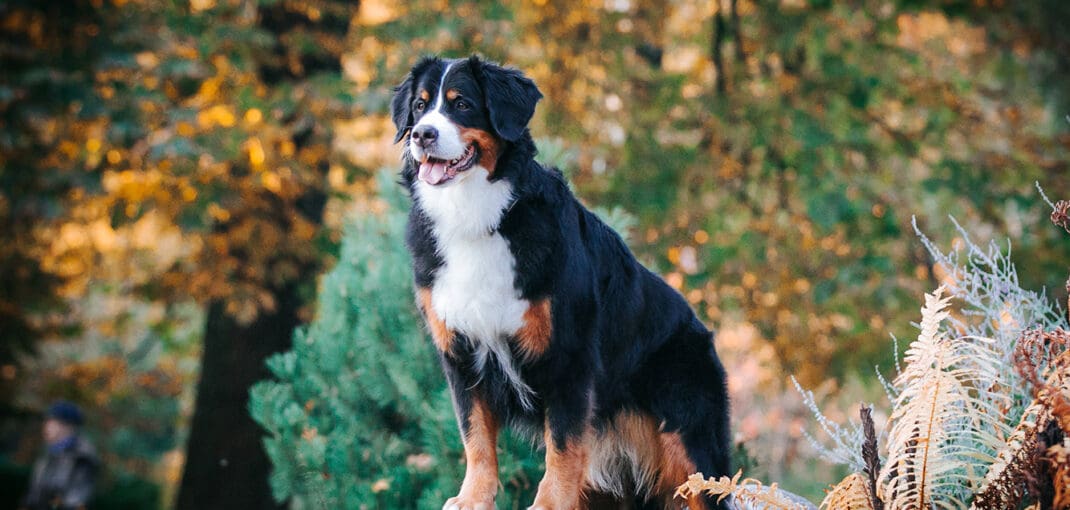The autumn-winter period, and in fact the low ambient temperature associated with this season and the shorter light cycle, are the main factors that alter metabolic rates in warm-blooded animals. Compensatory mechanisms in the form of increased blood supply to the skin are activated, the food-induced metabolic rate increases and the metabolic rate of nutrients increases. The results of scientific research have shown that warm-blooded organisms have developed a number of mechanisms during the course of evolution that adapt them to changes in the seasons. During winter, in the absence of food, most animals lose fat mass and reduce the efficiency of metabolic processes in muscle tissue. Conversely, between summer and autumn, animals enter a phase of anabolic fat accumulation, manifested by an increase in body weight above the norm. This programmed cycle seems to allow free-living animals to survive the unfavourable period.
Increased energy requirements
Species inhabiting areas with extreme changes in food availability and harsh environmental conditions may resort to seasonal obesity as a survival strategy. On the other hand, the programming of animals into such a metabolic cycle becomes the cause of excessive fat accumulation in those that reside in comfortable conditions throughout the year. Behavioural studies document an increase in food intake in both cats and dogs during winter. The reason for this is primarily a shortened light cycle, resulting in reduced melatonin production, which in turn triggers a compensatory serotonin- and leptin-dependent mechanism that results in an increase in appetite. If we add to this a reduced intensity of physical exercise, the consequence is an increased risk of overweight and obesity. When we think of winter, we pay particular attention to the low temperatures that can affect dogs when they are out walking. However, these animals are prepared both anatomically – through the specifics of their coat – and physiologically – through their stored excess energy in the form of adipose tissue – to survive at low temperatures for relatively long periods. The metabolic rate is increased and the excess energy produced is used to cover thermoregulatory losses. This situation applies to both low and high temperatures. A dog in very warm conditions (e.g. during a hot summer) loses a similar amount of energy to maintain a constant body temperature as a short walk in a snowstorm.
Key dietary components
Your pet’s diet during winter should – as during the other seasons – be tailored to the needs of the body. In winter, there is an increase in the amount of assimilable nutrients and their role is to cover a higher demand for energy, vitamins or selected biologically active substances. A basic prerequisite for maintaining your dog’s health during winter is to provide him with an adequate portion of food to cover his increased energy and nutrient requirements. Energy from fatty components may be increased. However, the excess should not exceed 10% of the dog’s summer diet. Valuable components that should be included in the daily diet of pets in winter (due to their coat, which at this time also has a protective function against heat loss) are n-6 polyunsaturated fatty acids, the sources of which are mainly vegetable oils: borage, evening primrose or linseed (although even rapeseed can be considered a valuable source of these acids).
Vitamin support and antioxidants
Just remember that, along with increased amounts of n-6 family fatty acids, the diet should also be supplemented with antioxidant components (vitamin E, fresh vegetables). During winter, your dog’s diet should be enriched with nutrients that have an energy function – as a result of the increased metabolic rate associated with maintaining a constant body temperature, energy requirements also increase. Such ingredients are primarily fats, the quality of which directly determines their function. The simplest, but not recommended method is to increase the amount of saturated fatty acids (animal fats). It is more advisable to use fattier meat, meat with skin (e.g. chicken breast, but with skin). From a nutritional point of view, unsaturated fatty acids in the form of both vegetable fats (vegetable oils) and fish fats (fish oil, oily fish with skin) are important. Their role – apart from providing energy – is to maintain the normal function of the skin together with its products (hair, claws), to increase the absorption in the digestive tract of other valuable dietary components, to keep inflammatory markers unchanged and to influence regeneration, muscle and bone tissue growth. Energy can also be increased through the use of carbohydrate components. The animal’s caretaker can also influence other bodily functions through a suitable choice of sources. For example, instead of rice, using oatmeal or barley flakes provides dietary fibre and vitamin components in addition to easily digestible carbohydrates. When increasing the amount of energy in the diet, one must also remember to increase the amount of vitamin components directly involved in the body’s energy metabolism. These include the water-soluble vitamins B1, B2 and B6. They play an important role in catalysing the energy metabolism of carbohydrates, proteins and fats, controlling the amount of energy stored as body fat. It is important to provide a wholesome feed at all times, where special attention should be paid to the quality of the protein used – the less processed it is, the more amino acids will be used for building purposes. A diet containing good quality protein together with polyunsaturated fatty acids, applied during the winter period, will influence the regeneration of the coat in spring.
Prevention of overweight and obesity in dogs
In winter, it is also important to pay attention to the digestibility of nutrients – the higher it is, the greater the amount will be absorbed and used for metabolic purposes. It is also worth remembering that it is the heat treatment that most affects nutrient losses. When using commercial ready-made diets, choose those that contain a high proportion of raw materials of meat origin and the addition of vegetable oils. Winter is also the period when we can effectively carry out a weight-reduction treatment for an overweight or obese dog. Based on the mechanism of increasing the metabolic rate (due to the need to maintain a constant body temperature), the amount of energy from the diet can remain constant. In such a situation, the quadruped’s body will be forced to use up its own reserves, including from body fat. To make the effect even better, consistently avoid giving your dog extra portions of treats and do not reduce the intensity of physical exercise in the form of walks or playing in the snow. Following these recommendations for an extended period of time will trigger adaptive mechanisms and the body will concentrate on catabolising fat tissue.
Keeping your dog hydrated in cold weather
During the winter period, it is important, especially for dogs living in warm areas with low humidity, to ensure constant access to drinking water – both to maintain a constant water-electrolyte balance and to provide conditions for the catabolic processes that are intensified during this time. The metabolism of proteins and fats only proceeds efficiently under appropriate cellular hydration conditions. In conclusion, let’s treat your dog in winter as we would at any other time of the year, ensuring a consistent dose of exercise. Do not give him more food – although this is theoretically physiologically based – the animal spends most of the day in comfortable conditions, so the increase in metabolic rate should not be too great.






